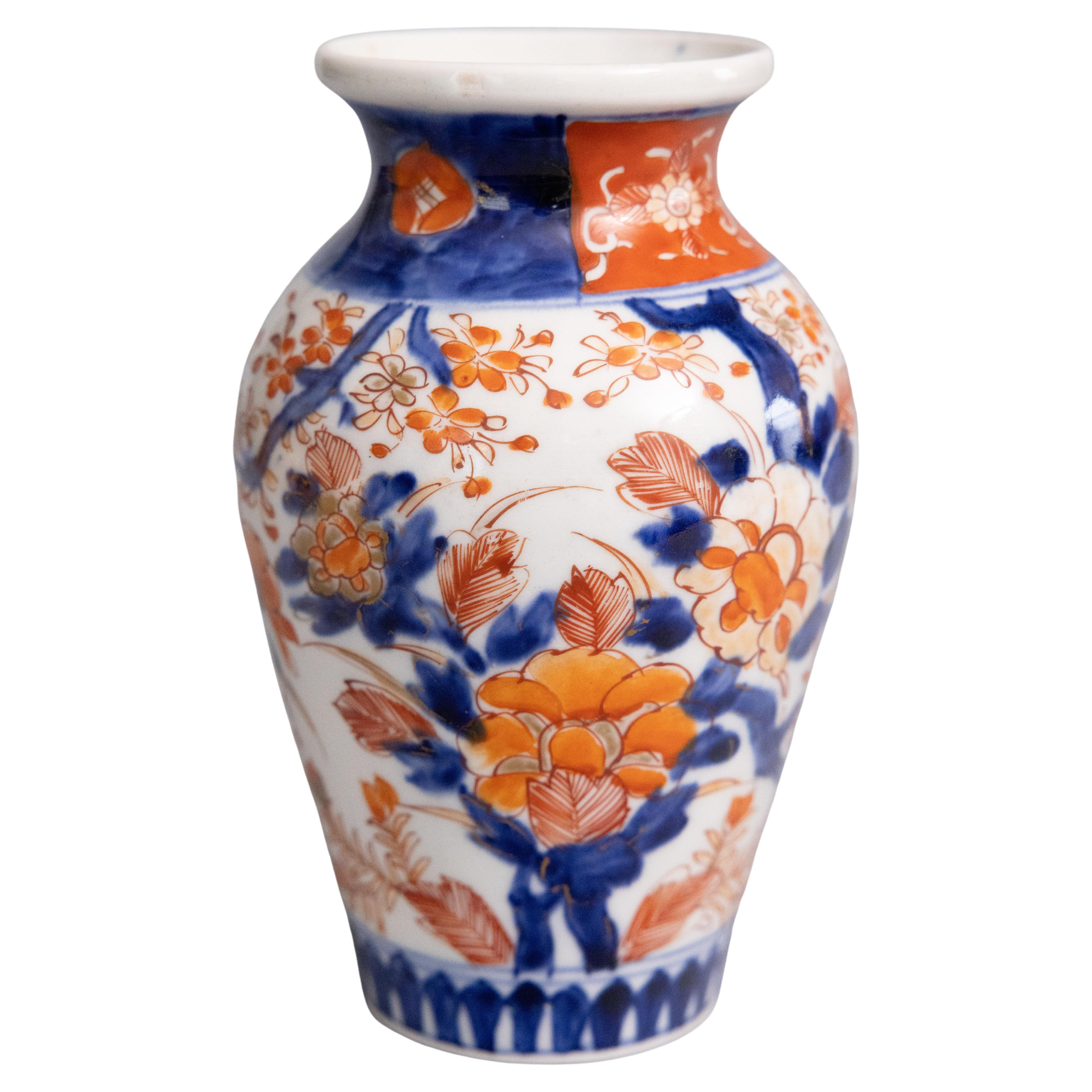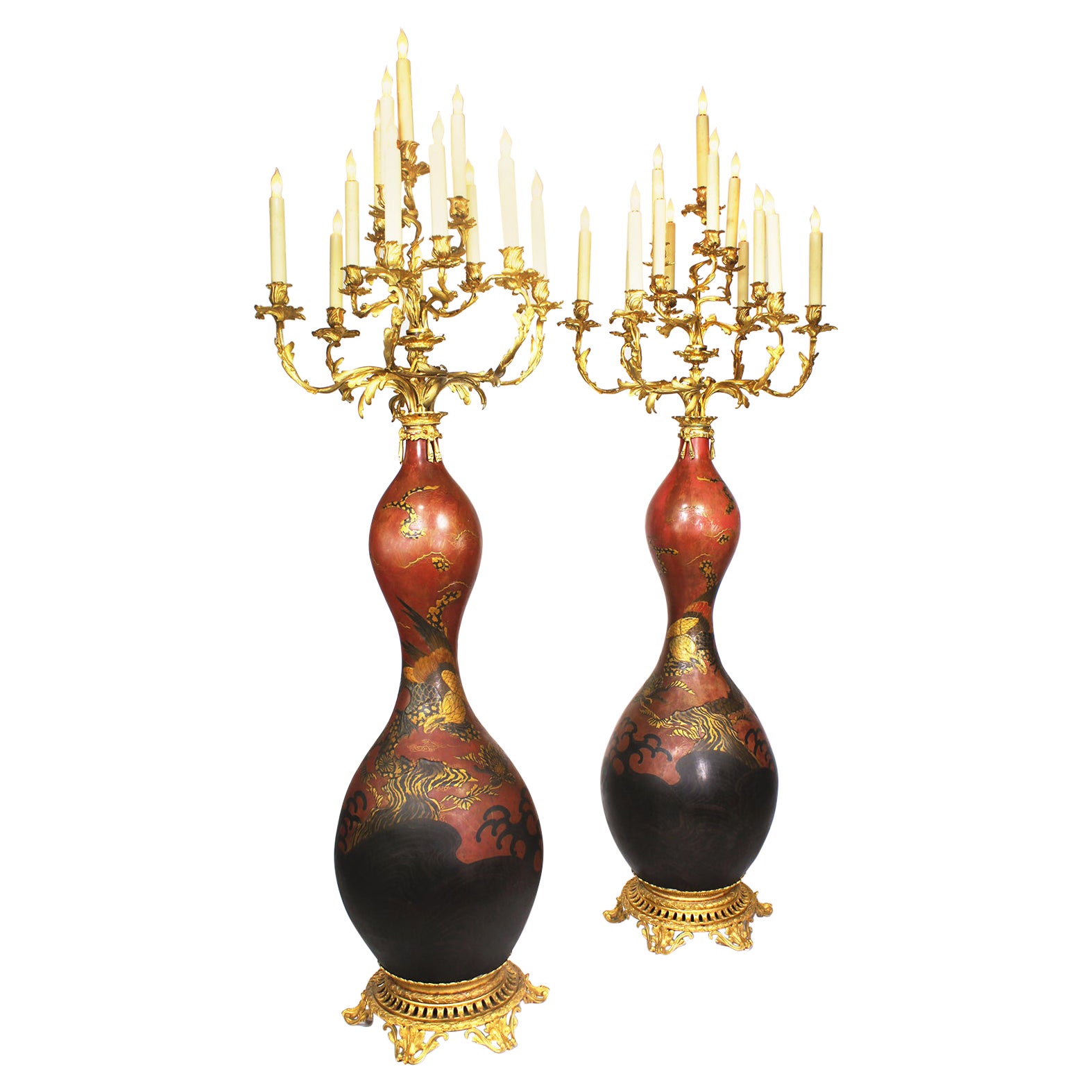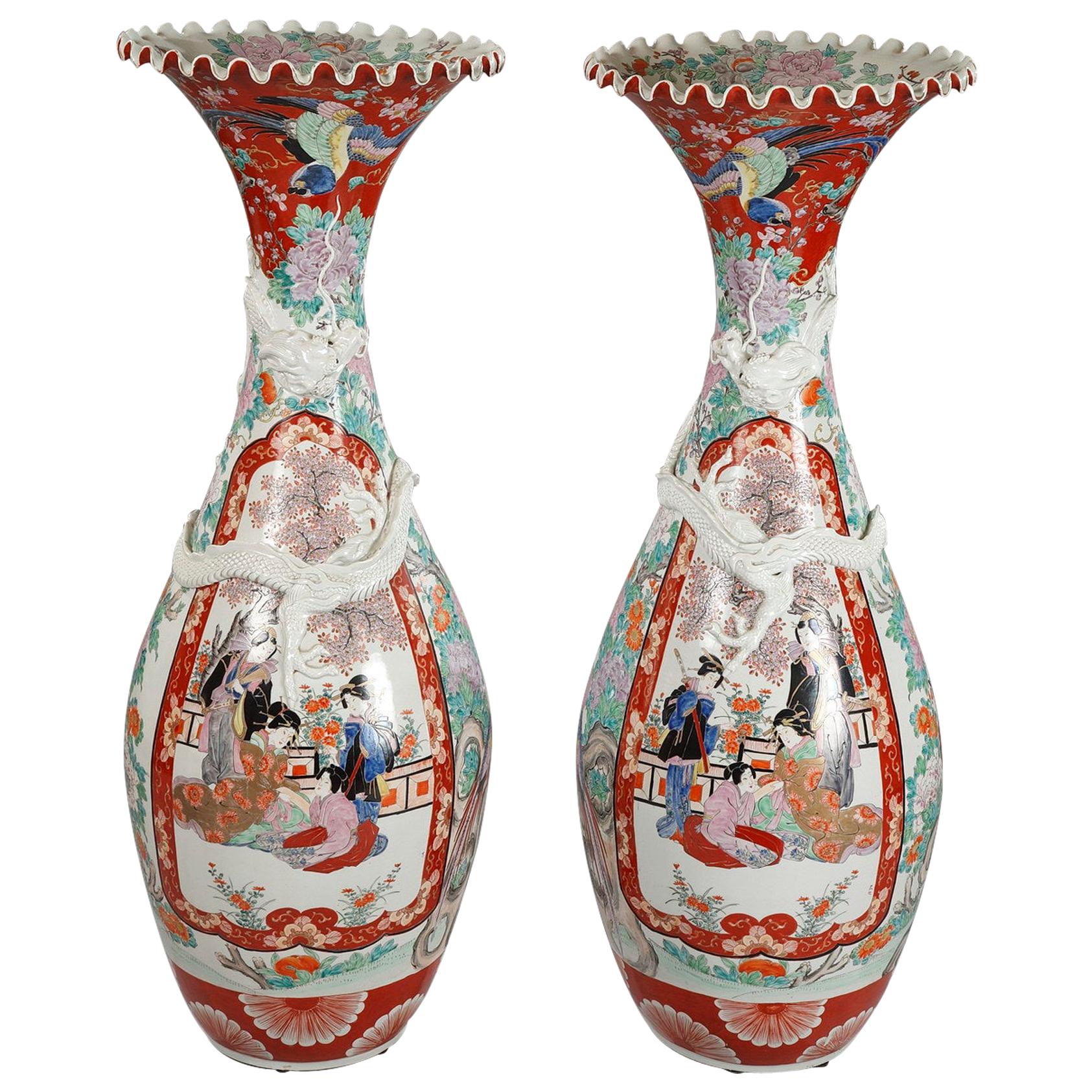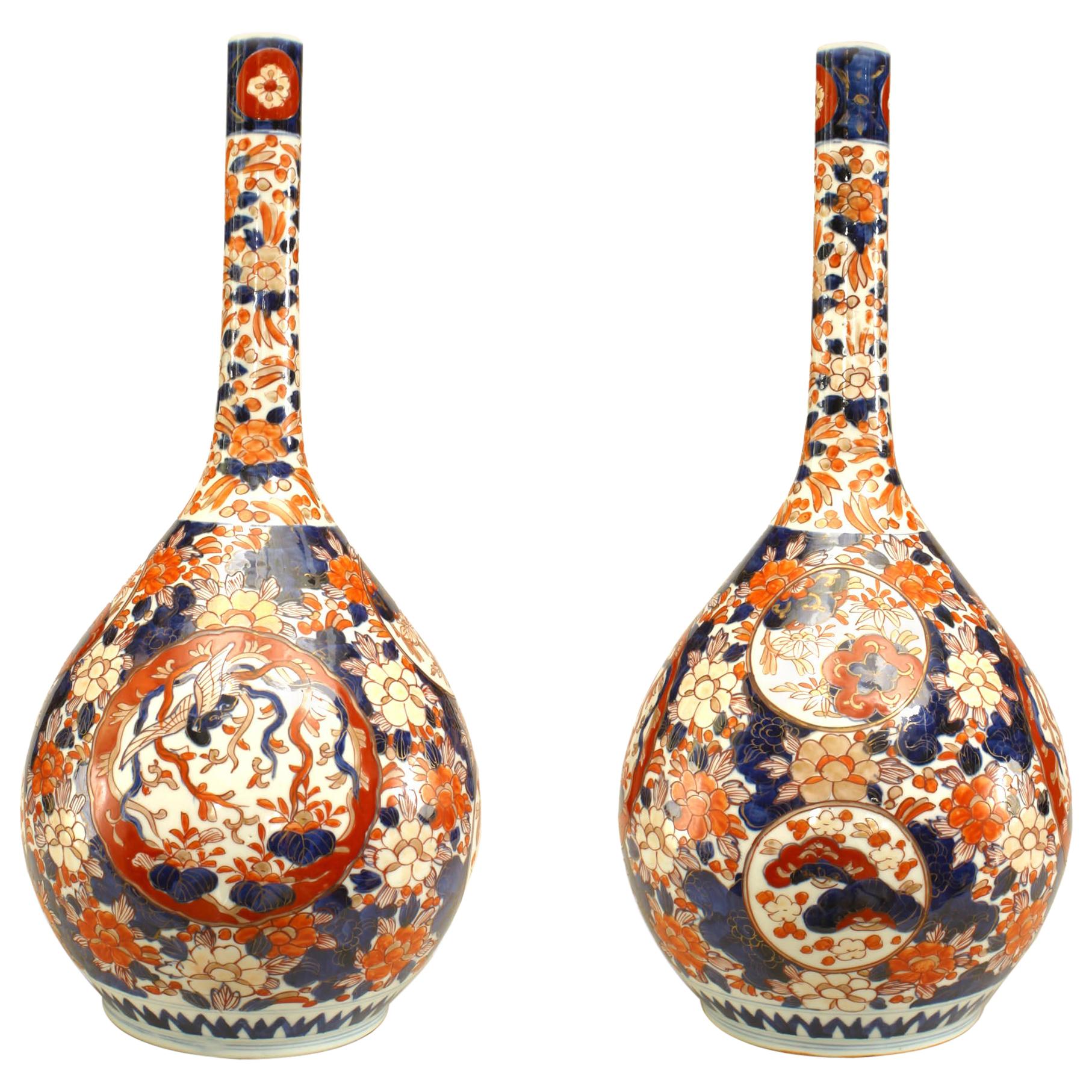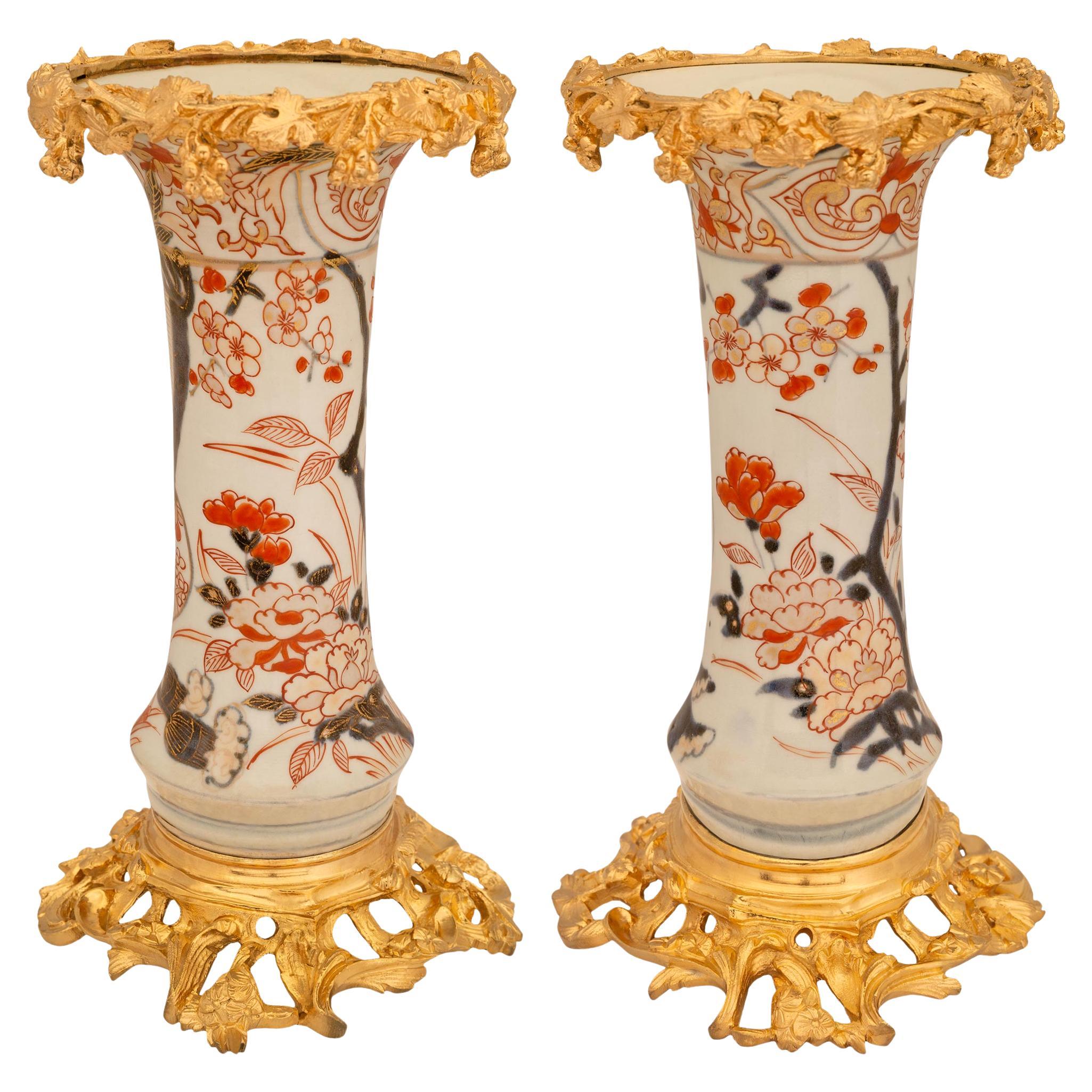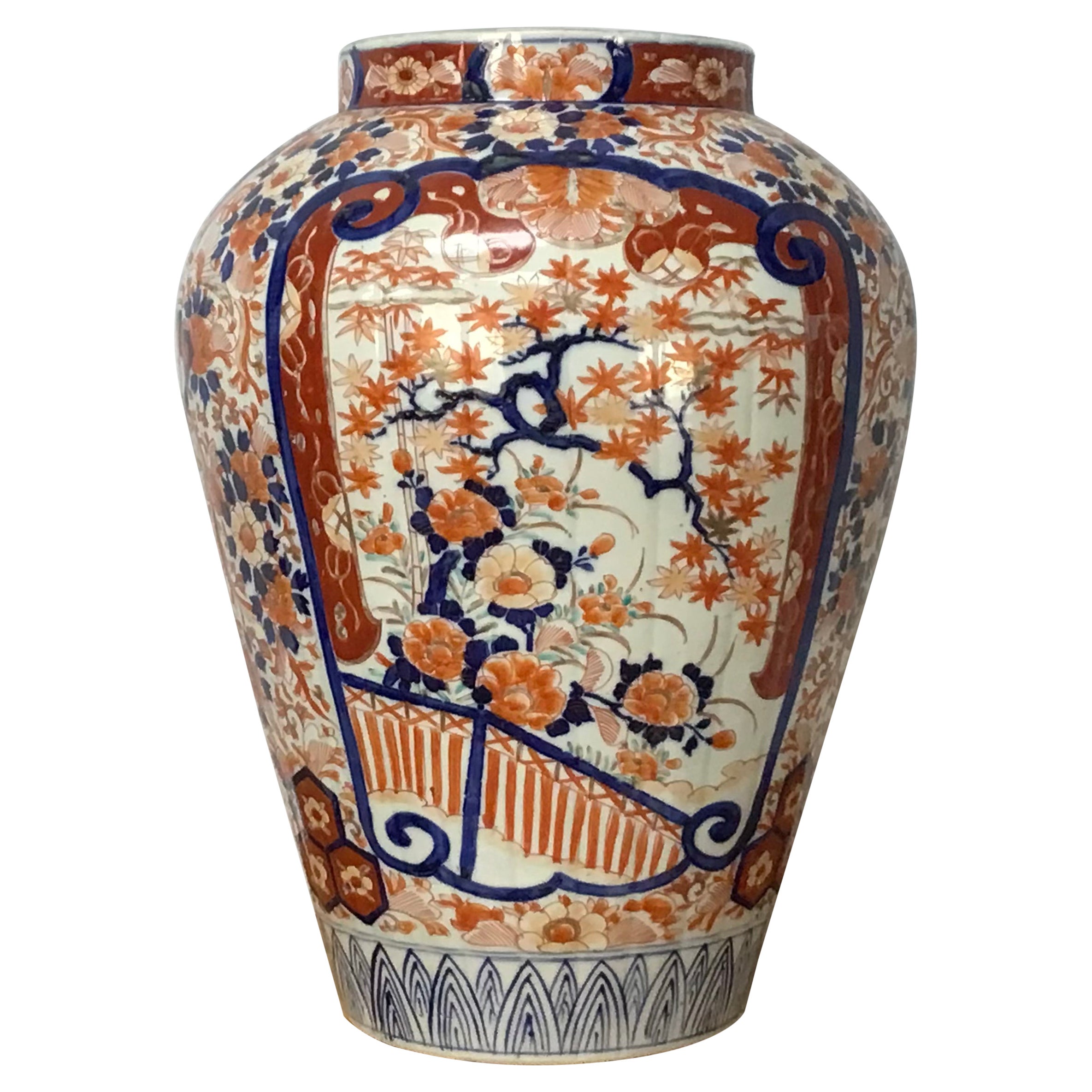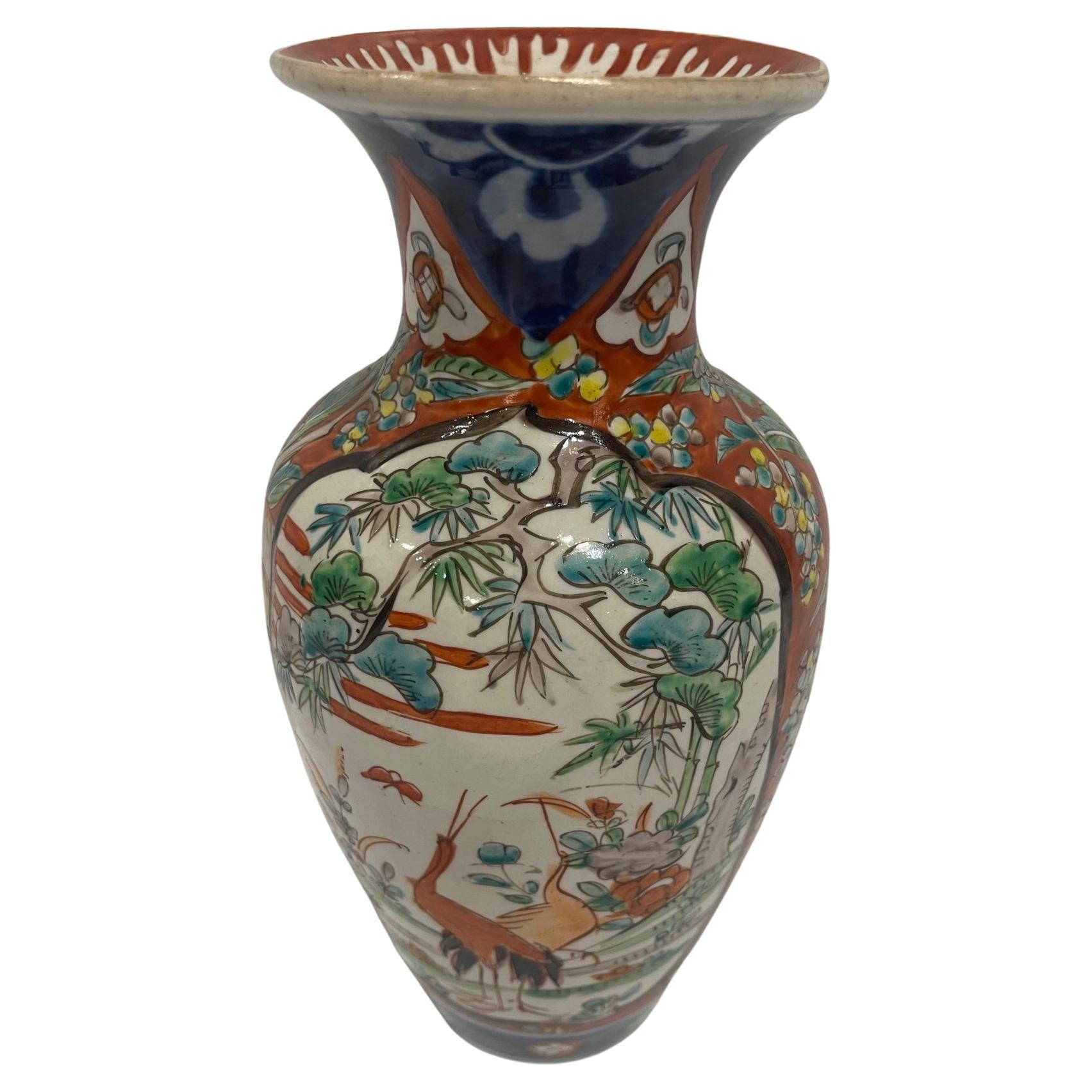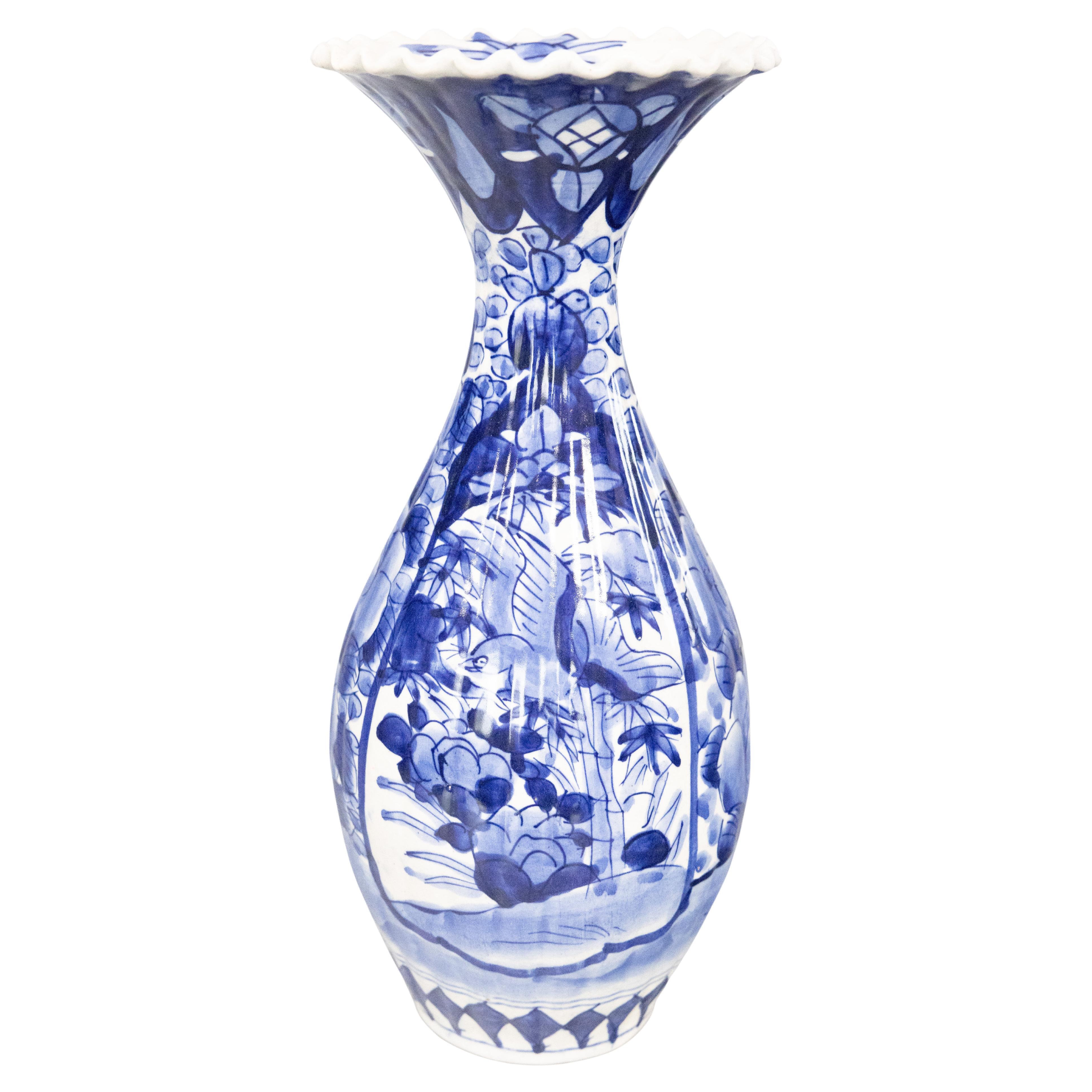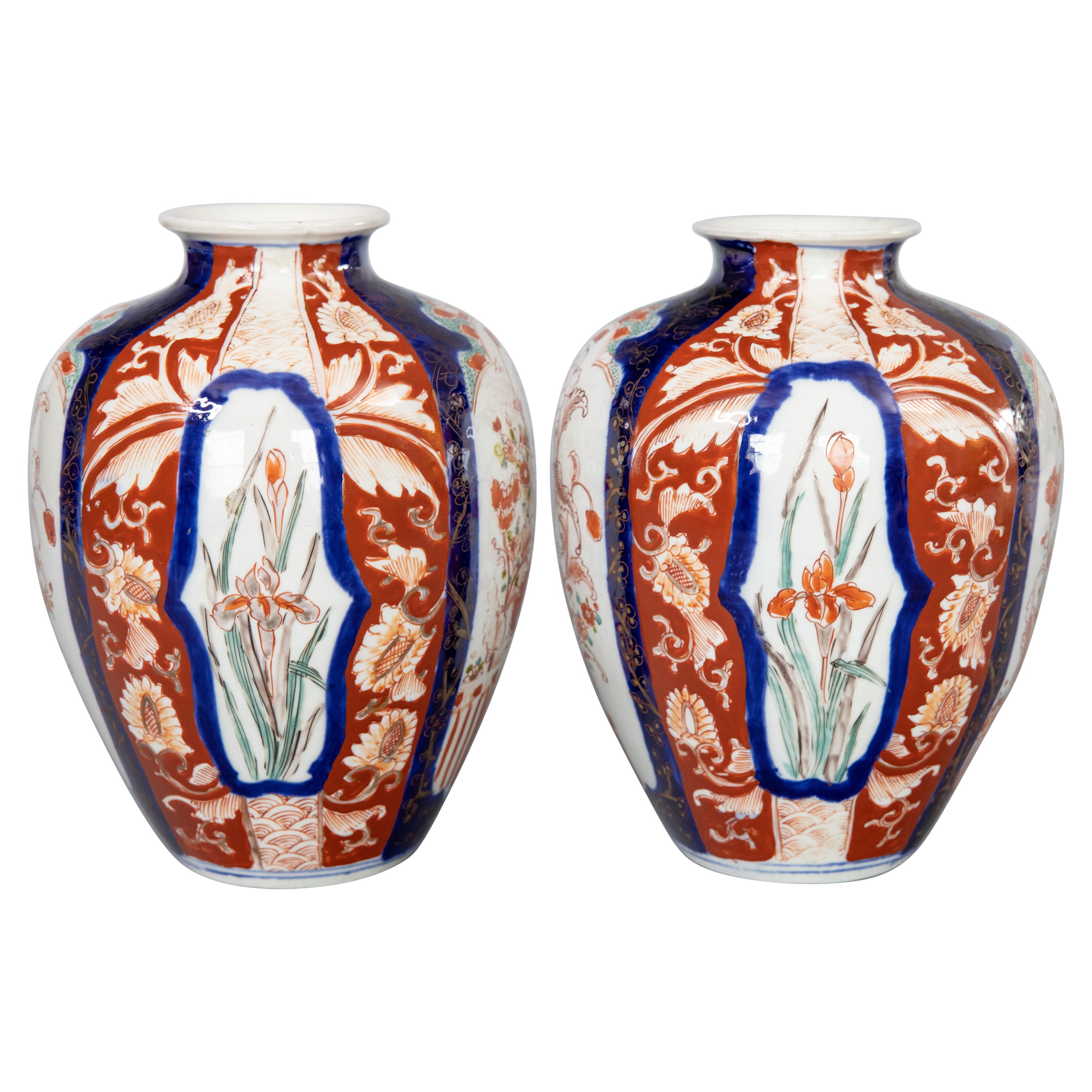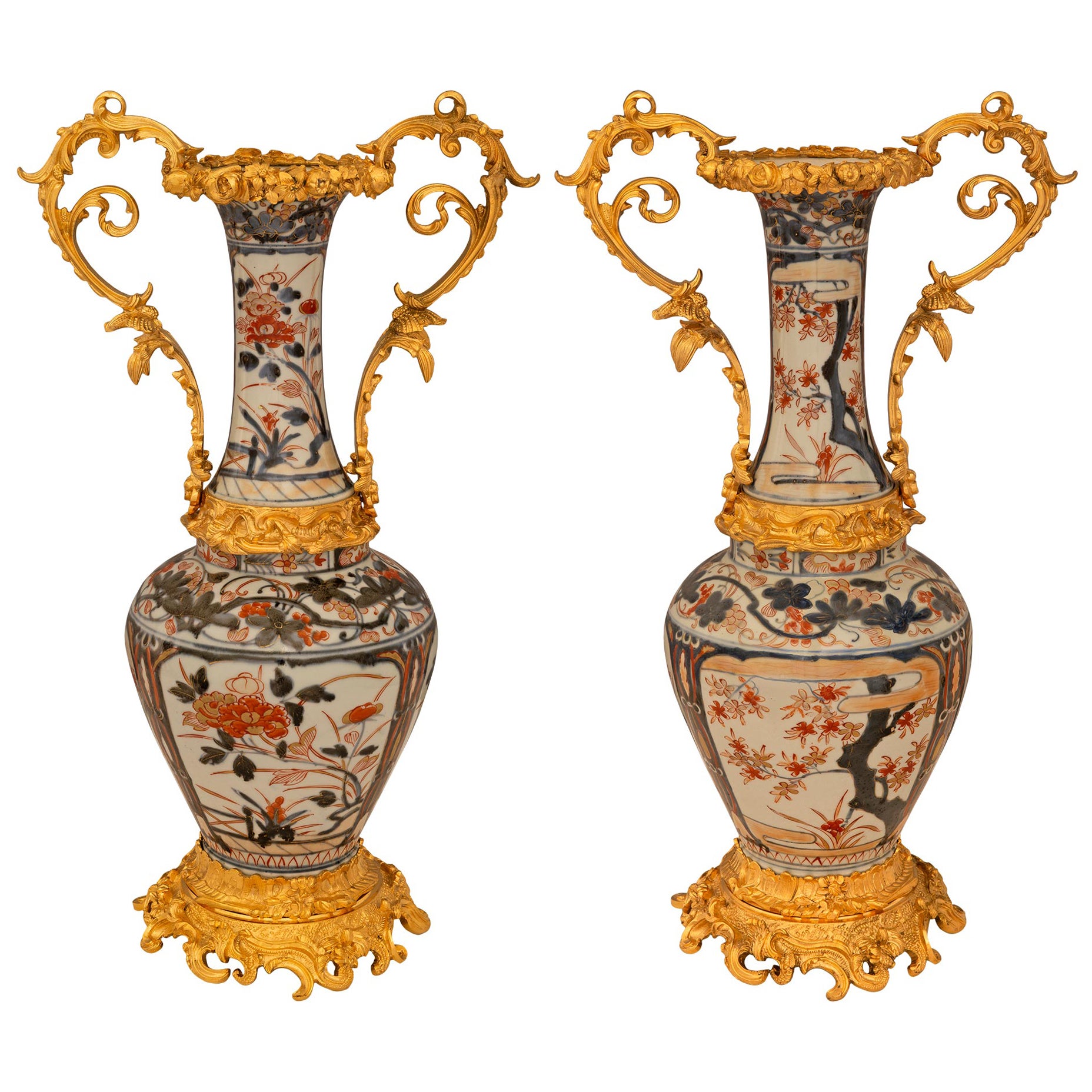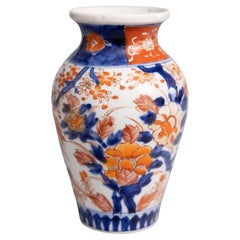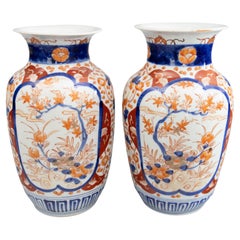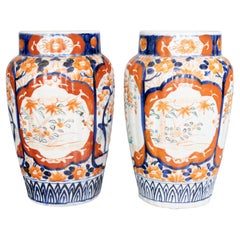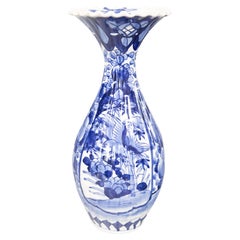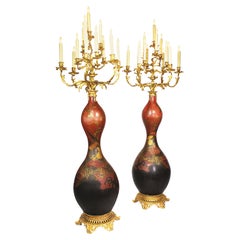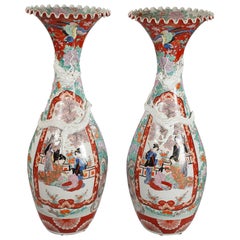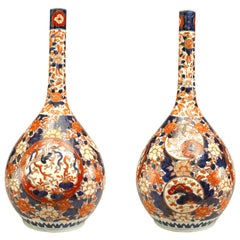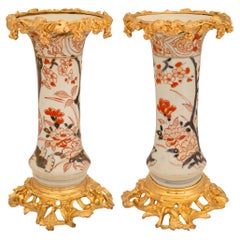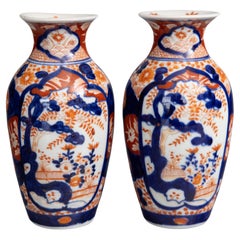
Antique 19th Century Japanese Imari Porcelain Vases - a Pair
View Similar Items
Want more images or videos?
Request additional images or videos from the seller
1 of 9
Antique 19th Century Japanese Imari Porcelain Vases - a Pair
About the Item
- Similar to:Imari Porcelain (Artist)
- Dimensions:Height: 7.5 in (19.05 cm)Width: 3.625 in (9.21 cm)Depth: 3.625 in (9.21 cm)
- Sold As:Set of 2
- Style:Japonisme (Of the Period)
- Materials and Techniques:Porcelain,Fired
- Place of Origin:
- Period:
- Date of Manufacture:19th Century
- Condition:Wear consistent with age and use.
- Seller Location:Pearland, TX
- Reference Number:Seller: 202304281stDibs: LU5998238089252
About the Seller
5.0
Platinum Seller
Premium sellers with a 4.7+ rating and 24-hour response times
Established in 2017
1stDibs seller since 2021
418 sales on 1stDibs
Typical response time: 1 hour
Authenticity Guarantee
In the unlikely event there’s an issue with an item’s authenticity, contact us within 1 year for a full refund. DetailsMoney-Back Guarantee
If your item is not as described, is damaged in transit, or does not arrive, contact us within 7 days for a full refund. Details24-Hour Cancellation
You have a 24-hour grace period in which to reconsider your purchase, with no questions asked.Vetted Professional Sellers
Our world-class sellers must adhere to strict standards for service and quality, maintaining the integrity of our listings.Price-Match Guarantee
If you find that a seller listed the same item for a lower price elsewhere, we’ll match it.Trusted Global Delivery
Our best-in-class carrier network provides specialized shipping options worldwide, including custom delivery.More From This Seller
View AllAntique 19th Century Japanese Imari Porcelain Vase
By Imari Porcelain
Located in Pearland, TX
19th-Century Japanese Imari porcelain vase. This fine vase have a lovely shape and hand painted floral designs in the traditional Imari colors.
Category
Antique 19th Century Japanese Japonisme Vases
Materials
Porcelain
Pair of 19th Century Japanese Meiji Period Imari Porcelain Vases
By Imari Porcelain
Located in Pearland, TX
A gorgeous pair of 19th-Century Japanese Meiji Period Imari porcelain vases. These fine vases have a lovely shape and hand painted floral designs in the traditional Imari colors. The...
Category
Antique Late 19th Century Japanese Vases
Materials
Porcelain
$1,495 Sale Price / set
21% Off
Pair of 19th Century Meiji Period Japanese Imari Porcelain Vases
By Imari Porcelain
Located in Pearland, TX
A gorgeous pair of antique 19th-Century Japanese Imari vases made in the Meiji period, circa 1870. These fine vases have a lovely lobed shape and hand painted floral design in the tr...
Category
Antique Mid-19th Century Japanese Meiji Vases
Materials
Porcelain
19th Century Meiji Period Japanese Imari Ribbed Blue & White Porcelain Vase
By Imari Porcelain
Located in Pearland, TX
A gorgeous antique 19th-Century Japanese Imari scalloped floral vase made during the Meiji period. This fine vase has a lovely baluster form with a ribbed design, ruffled rim, and ha...
Category
Antique 19th Century Japanese Vases
Materials
Porcelain
Pair of 19th Century Japanese Imari Porcelain Vases
Located in Pearland, TX
A gorgeous pair of 19th-Century Japanese Imari porcelain vases. These fine vases have a lovely shape and hand painted floral design in the traditional Imari...
Category
Antique Late 19th Century Japanese Vases
Materials
Porcelain
$1,195 Sale Price / set
20% Off
19th Century Antique Imari Porcelain Chargers, a Pair
By Imari Porcelain
Located in Pearland, TX
A wonderful pair of antique, 19th century Imari chargers with lovely lobed edges, in traditional vibrant oranges and blues. They retain the original antique hangers.
Category
Antique 19th Century Japanese Japonisme Porcelain
Materials
Porcelain
You May Also Like
Pair 19th Century Japanese Imari Porcelain & Gilt-Bronze Torchere Candelabra
By Imari Porcelain
Located in Los Angeles, CA
A fine Pair of 19th century Japanese Imari Porcelain and French Gilt-Bronze Mounted Thirteen-Light Celadon Torchere Candelabra. The bottle-shaped Japonisme vases with a Royal red background, decorated with parcel-gilt and black soaring eagles in the hunt within a forestall scene. Each Vase fitted and surmounted with a French 19th century Louis XV Style 13-Light scrolled candelabrum and all raised on a circular pierced gilt-bronze plinth. circa: 1880.
Imari Porcelain (????) is the name for Japanese porcelain wares made in the town of Arita, in the former Hizen Province, northwestern Kyushu. They were exported to Europe extensively from the port of Imari, Saga, between the second half of the 17th century and the first half of the 18th century. The Japanese as well as Europeans called them Imari. In Japanese, these porcelains are also known as Arita-yaki (???). Imari or Arita porcelain has been continously produced up through the present day.
Characteristics
Though there are many types of Imari, Westerners' conception of Imari in the popular sense is associated only with a type of Imari produced and exported in large quantity in mid-17th century. This type is called Kinrande. Kinrande Imari is colored porcelain with cobalt blue underglaze and red and gold overglaze. The color combination was not seen in China at that time. Traditional Ming dynasty color porcelain used dominantly red and green, probably due to scarcity of gold in China, whereas gold was abundant in Japan in those days. The subject matter of Imari is diverse, ranging from foliage and flowers to people, scenery and abstractions. Some Imari design structures such as kraak style were adopted from China, but most designs were uniquely Japanese owing to the rich Japanese tradition of paintings and costume design. The porcelain has a gritty texture on the bases, where it is not covered by glaze. There is also blue and white Imari. Kakiemon style Imari is another type of Imari, but it tends to be categorized separately in Europe.
History
"Imari" was simply the trans-shipment port for Arita wares. It was the kilns at Arita which formed the heart of the Japanese porcelain industry.
Arita's kilns were set up in the 17th century, when kaolin was discovered in 1616 by the immigrant Korean potter, Yi Sam-pyeong (1579–1655). (He may also be known by the name, "Kanage Sambei".) Yi Sam-Pyeong, along with his extended family of 180 persons, left Korea on the offer of a privileged position in Japan. This decision was made after the occurrence of certain Japanese invasions of Korea. After Yi Sam-Pyeong's discovery, his kilns began to produce revised Korean-style blue and white porcelains, known as "Shoki-Imari".
In the mid-17th century there were also a lot of Chinese refugees in Northern Kyushu due to the turmoil on Chinese continent, and it is said one of them brought coloring technique to Arita. Thus Shoki-Imari developed into Ko-KutaniImari. Ko-Kutani was produced around 1650 for both export and domestic market. Blue and white porcelain continued to be produced and they are called Ai-Kutani. Ko-Kutani Imari for the export market usually adopted Chinese design structure such as kraak style, whereas Ai-Kutani for the domestic market were highly unique in design and are accordingly valued very much among collectors.
Ko-Kutani style evolved into Kakiemon style Imari, which was produced for about 50 years around 1700. Imari achieved its technical and aesthetic peak in Kakiemon style, and it dominated European market. Blue and white Kakiemon is called Ai-Kakiemon. Kakiemon style transformed into Kinrande in the 18th century. Kinrande used blue underglaze and red and gold overglaze, and later some other colors.
Imari began to be exported to Europe because the Chinese kilns at Ching-te-Chen were damaged in the political chaos and the new Qing dynasty government stopped trade in 1656–1684. Exports to Europe were made through the Dutch East India Company, but the designation "Imari Porcelain" in Europe connotes Arita wares of mostly Kinrande Imari.
Export of Imari to Europe stopped in mid-18th century when China began export to Europe again, since Imari was not able to compete against China due to high labor cost. By that time, however, both Imari and Kakiemon style were already so popular among Europeans, Chinese export porcelain copied both Imari and Kakiemon style, which is called Chinese Imari. At the same time, European kilns, such as Meisen also tried to copy Imari and Kakiemon.
Export of Imari surged again in late 19th century (Meiji era) when Japonism flourished in Europe. Thus in western world today, two kinds of Imari can...
Category
Antique 19th Century Japanese Japonisme Floor Lamps
Materials
Bronze, Ormolu
$24,850 Sale Price / set
49% Off
Pair of Large Imari Porcelain Vases, Japan, Late 19th Century
By Imari Porcelain
Located in PARIS, FR
A very fine pair of Imari porcelain vases, of tapering form with flared top. Decorated with polychrome birds and flowers on white background. The body is painted with shaped panels o...
Category
Antique Late 19th Century Japanese Vases
Materials
Porcelain
Pair of 19th Century Japanese Imari Porcelain Vases
Located in Queens, NY
Pair of 19th century Japanese Imari Porcelain vases with slender necks depicting floral and bird motifs in shade of red and cobalt.
Category
Antique 19th Century Asian Japonisme Vases
Materials
Porcelain
pair of Japanese 19th century Imari Porcelain and French Ormolu mounted vases
By Imari Porcelain
Located in West Palm Beach, FL
A sensational and most elegant pair of Japanese 19th century Imari Porcelain and French Louis XV st. Ormolu mounted vases. Each colorful vase is raised by a pierced Ormolu base with ...
Category
Antique 19th Century French Louis XV Vases
Materials
Ormolu
Large 19th Century Japanese Imari Ware Porcelain Vase
Located in Bradenton, FL
A large scale and very good quality late 19th century Japanese Imari vase with exotic birds, trees and flowers. Wonderful coloring in vibrant hues of blue, red and rust.
Category
Antique 19th Century Japanese Japonisme Ceramics
Materials
Porcelain
Imari Japanese Porcelain Vase, 19th Century
Located in Savannah, GA
Imari Japanese Porcelain Vase, 19th Century
Category
Antique 19th Century Japanese Vases
Materials
Porcelain
Recently Viewed
View AllMore Ways To Browse
Versace Vase Blue
Vetro Di Empoli
Vintage Amber Crackle Glass Vase
Vintage Antique Very Tall Vase Blue
Vintage Coors Pottery
Vintage Lusterware Vase
Vintage Monmouth Pottery
Vintage Studio Keramik Modernist Vase
W J Gordy
Walbrzych China
Walter Becht
Walter Von Nessen Watering Can
Wedgwood Spill Vase
Willem Brouwer Dutch
Winnie Bowstead
Yemen Coral
Zaha Hadid Vase
Zortea Bassano
